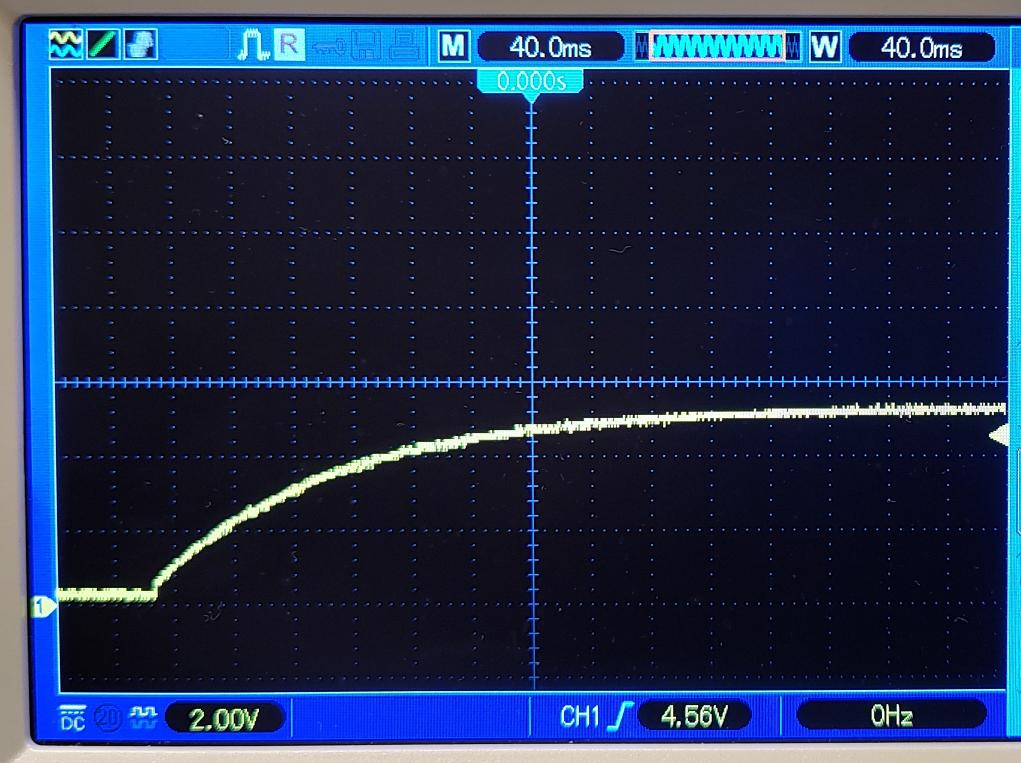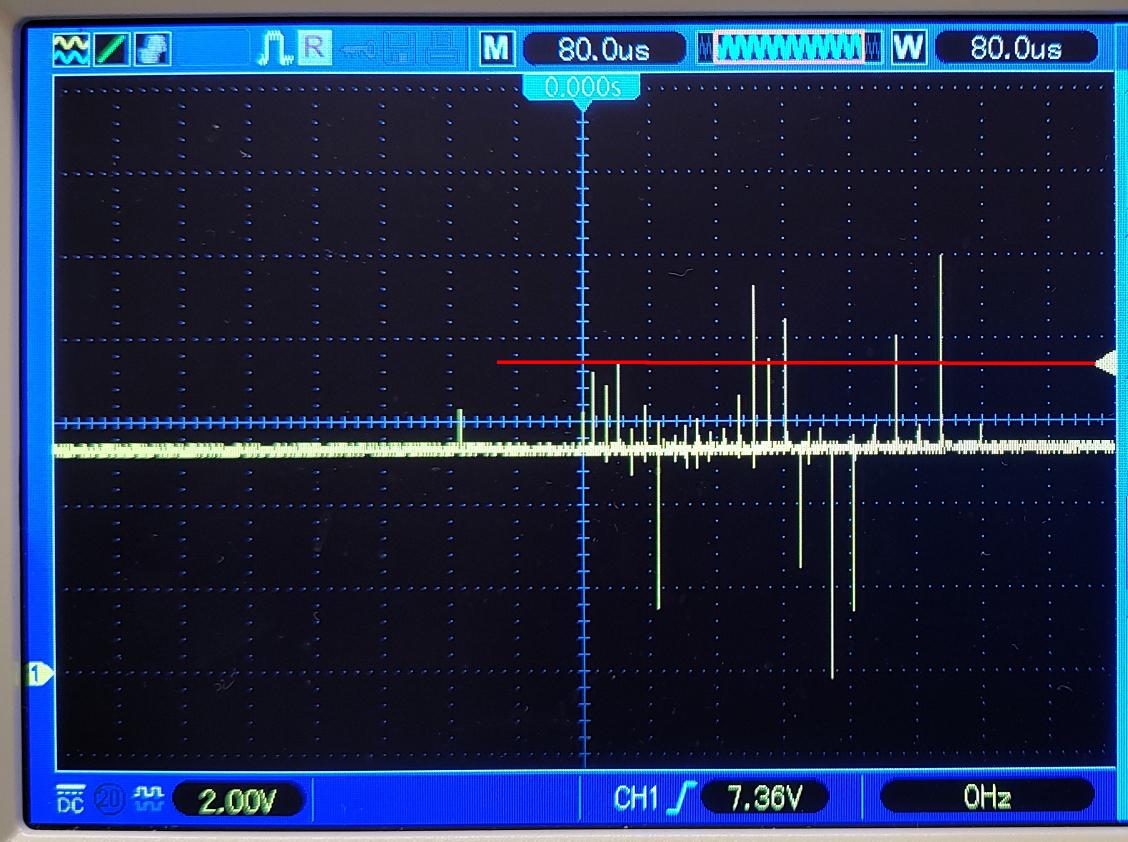Table of Contents
2023-01-07 - too cheap lab power supply
some years ago i bought Zhaoxin RXN-305D – cheap, lab power supply unit for my HW workshop. at a glance it speced-enough for my humble needs (up to: 35V, 5A).
i was generally careful when connecting it to/from devices, that are not tolerant to voltage spikes. however it was more of a “just in case” / “being overly careful”… until a few days ago. Sławek mentioned to me, that he had a problem voltage spikes on turning on a chap Chinese PSU, that at a glance looked a lot like mine. it was no mistake – turned out it's the same device type. so i started testing mine with oscilloscope.
testing
i decided to test 2 parameters:
- 5V and 12V
- power on with load (22R power resistor) and without load
in two cases:
- power on
- power off
that gave total of 4 cases. i'll show the most interesting ones here.
5V
here's voltage rising to 5V, when powered on. it's a bit sluggish (over 400ms to rise) if u ask me, but otherwise LGTM. certainly no spikes. it was the same for 12V. all with and without load.
things started getting interesting, when powering off.
1st let's tart with 5V. i've added red bar to mark trigger level at 7.36V. note that it's more than 50% over the preset 5V! it is also breached a lot. on the plot almost 1ms worth of very high spikes (up to 10V - 200% of the preset!) is clearly noticeable. interestingly enough the oscillations are rising over time, not falling. it was pretty much the same with and without load.
12V
very similar story is for 12V. this time i've zoomed in a bit - on 1µs scale spikes show up as a set of consecutive, rising in amplitude oscillations, that fade out just for another spike to show up. red mark is trigger level set for 14.6V (over 20% above preset 12V). here the highest spike was around 18.5V mark, though it was not PSU's last word.
one more thing...
i almost forgot. while finding i just described is news to me as well, i did stumble upon one more issue with this PSU. when current limit it set very low (next-to-minimum), voltage often dies out only to show up again, only to die out again… which is obviously unworkable state.
over time i learned not to limit it below ~0.4A to mitigate this. however it's not a nice thing, as many times i did want to have voltage set way below that, to protect some sensitive part. literally last year (that'd be around mid-2022 probably) i fried my sons toy's lightning when fixing cabling, because of this. the toy was using coin-cell battery as a power supply and used its internal resistance as a poor-mans current-limiter, instead of a regular resistor. i have not noticed a missing resistor and after checking battery voltage, happily hooked it up to my PSU, with preset voltage and 400mA of current limit. if that was around 20-40mA, overcurrent protection would immediately kick in and it would be obvious sth is off here and i could just power it off for an inspection.
conclusions
discovery of the year – cheap stuff is usually cheap for a reason. turned out my being preemptively careful was not a bad choice, after all. these voltage spikes could easily kill some of the more sensitive devices. from now on i'll definitely make sure i keep powering these up and down only when PSU is still running, to avoid “surprises”.
the bad news is that these kind of artifacts will not be put on the box. u can learn it only by testing out (or reading review on the internet). in my case this design flaw was discovered only over 10 years after i bought the device. i never had issues that i could blame on PSU's voltage so far, so this means being careful did pay off.
u could say “if it worked for 10+ years, that means it's good”. i'd say – not it's not. i was just lucky to follow my gut feeling of not to trust it too much… most of the time at least…




